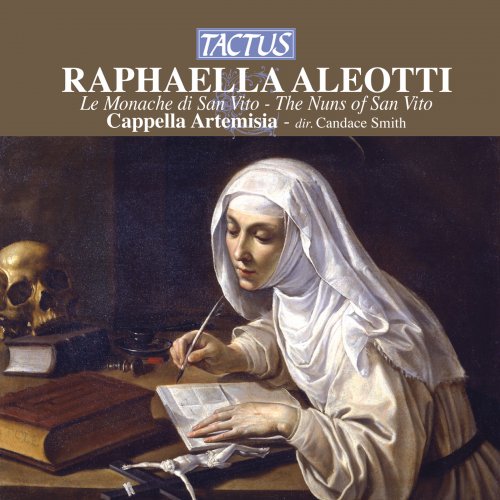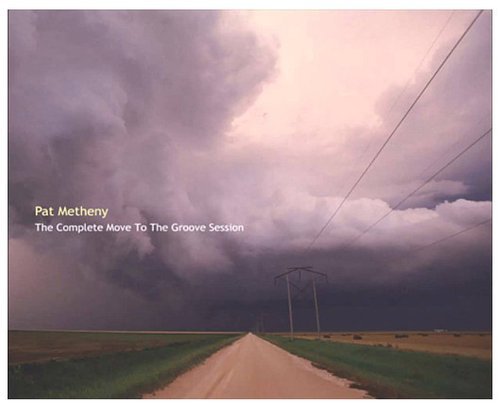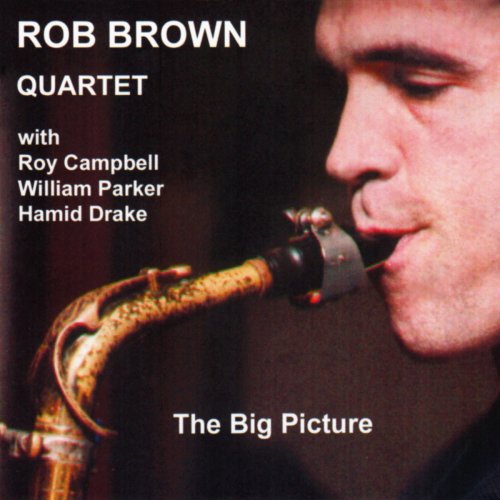Cappella Artemisia, Candace Smith - Raphaella Aleotti: Le Monache di San Vito (2012)

Artist: Cappella Artemisia, Candace Smith
Title: Raphaella Aleotti: Le Monache di San Vito
Year Of Release: 2012
Label: Tactus
Genre: Classical
Quality: FLAC (tracks)
Total Time: 1:09:09
Total Size: 316 MB
WebSite: Album Preview
Tracklist:Title: Raphaella Aleotti: Le Monache di San Vito
Year Of Release: 2012
Label: Tactus
Genre: Classical
Quality: FLAC (tracks)
Total Time: 1:09:09
Total Size: 316 MB
WebSite: Album Preview
01. Sancta et immaculata virginitas
02. Hodie nata est beata Maria
03. Congratulamini mihi omnes
04. Exurgat Deus
05. Obstupescite
06. Iubilate Deo omnis terra
07. Diligam te Domine
08. Surge, propera amica mea
09. Beatus Laurentius
10. Miserere mei Deus
11. Secondo libro di mottetti: Lauda Syon
12. Facta est cum angelo
13. Congregati sunt inimici nostri
14. Ascendens Christus in altum
15. De la donna ch'adora
16. Vidi speciosam sicut columbam
17. Ego flos campi
18. Audivi vocem de caelo
19. Angelus ad pastores ait
20. Secondo libro di mottetti: Caro mea
21. Exaudi Deus orationem meam
22. Ghirlanda de madrigali: Se del tuo corpo
23. Quem vidistis pastores
The music written by convent nuns remains among the least-investigated aspects of the tradition of Western concert music by women, and this disc of Italian music of the early seventeenth century hints at the riches still to be discovered, performed, and recorded elsewhere. Raphaella Aleotti was the "concert mistress" of a convent San Vito, near the musically rich city of Ferrara, and musicians there praised her compositions. She was of noble birth, probably named Vittoria Aleotti before taking religious orders, and she also is thought to have composed one collection of secular madrigals before that time. That gives a clue as to what these choral compositions are like: Aleotti was on top of the new styles that had roots in opera and the secular madrigal. Her music has hints of the older prima prattica (Italian for "old school"); she often favors strictly imitative phrase entrances, for example. But she tends toward dramatic expression of the text, and when the singers of the Cappella Artemisia (presumably named for the fabulous artist Artemesia Gentileschi, who favored Judith's decapitation of Holofernes as a subject) set the top line of one of these motets as an instrumentally accompanied solo, it's easy to imagine that you're listening to unknown Monteverdi. That is just one of the group's many ways of interpreting the printed notes; they use various vocal and instrumental configurations, offering possible sonorities in a spirit of experiment. That gives the music a discontinuity that probably wasn't intended, but it works well enough in this case: the convent, remarkably, is known to have used a variety of secular instruments, and most of them are deployed here. The music is accomplished and imposing, and the only appearance of the intimate quality one might expect from convent music comes in the length of the individual pieces -- they are mostly under three minutes long and have the quality of individual utterances. (One longer piece included is by a male composer, Giovanni Battista Mazzaferrata; though secular and even sexy, it was dedicated to one of the nuns at San Vito.) This disc certainly has something of an investigative quality, but it is more than competently performed and recorded. Notes are in Italian, English, and French, but texts are in Latin (or Italian) only. Recommended to all interested in music by women, and a nice source of an instant term paper for students.



![LRK Trio, Elizaveta Korneyeva and Euphoria Orchestra - LRK Orchestra (2025) [Hi-Res] LRK Trio, Elizaveta Korneyeva and Euphoria Orchestra - LRK Orchestra (2025) [Hi-Res]](https://www.dibpic.com/uploads/posts/2025-12/1766210674_qm8oj75twl1x5_600.jpg)


![Rainer Brüninghaus, Kenny Wheeler, Jon Christensen & Brynjar Hoff - Freigeweht (1981/2025) [Hi-Res] Rainer Brüninghaus, Kenny Wheeler, Jon Christensen & Brynjar Hoff - Freigeweht (1981/2025) [Hi-Res]](https://www.dibpic.com/uploads/posts/2025-12/1766402111_cover.jpg)

